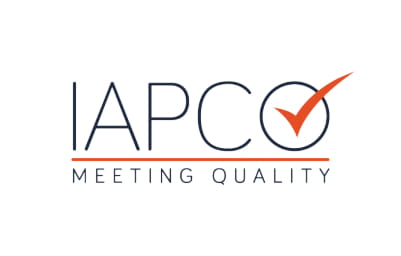Strategic Partnerships: Do They Really Deliver Value to Members, Customers and Stakeholders?

AUTHOR: MARTIN BOYLE, CEO OF IAPCO
The simple answer is yes, of course they do. The more pertinent questions to ask are how do you measure the value and benefits that can be achieved and who is in the driver’s seat of creating a partnership at this level?
When one asks Google: “What is a strategic partnership?” you are very quickly provided with 59,200,000 responses. The most relevant I feel is really quite straight-forward:
A strategic partnership is a relationship between two commercial enterprises, usually formalised by one or more business contracts. A strategic partnership will usually fall short of a legal partnership entity, agency, or corporate affiliate relationship and can take on many forms from simple verbal agreements to Memorandums of Understanding and even formal contracts.
Now that we have a bit of a definition, let’s look at the decision-making factors that may be required before considering forming a strategic partnership.
Who is the initiator and driver of the partnership and why is it being considered?
If you are a not-for-profit association, perhaps there is an organisation that has access to a specific service, membership group, certification, research or educational programmes that you feel would be of value to your own members and stakeholders. If you are a more commercially driven organisation, perhaps there is another that has a specific commercial asset that, should you wish to offer to your customers, it would require an investment above your means.
Whatever the reason you have, you must be clear in the rights and obligations of each party involved with regards to intellectual property, ownerships, affiliations, exclusivity, competition, financial obligations, rights, duration and termination dates.
Measuring the value and results generated from a strategic partnership and then communicating these to the constituents involved is essential. Setting clear objectives at the beginning of the arrangement, with a methodology to capture and record the results, should be considered.
A concrete example
Looking at our organisation, it has been a strategic decision of the Council of the International Association of Professional Congress Organisers (IAPCO) to drive strategic partnerships only with organisations that mirror our own mission of raising the professionalism of the global meetings and events industry. We have built mutually beneficial partnerships that are focused on shared educational content and drive specific advocacy initiatives through the creation of Task Force Partnerships.
As an example, and to provide context, in April 2020, as a direct response to the global COVID pandemic’s impact on the business and professional events industry, IAPCO created a strategic partnership in the form of a “Strategic Task Force” of 14 national PCO (professional congress organisers) associations. Our 3-point mandate was clear from the start:
- to advocate, through a unified voice for the safe re-opening of the meetings industry globally;
- to share data and best practice case studies amongst partners in the Task Force, and;
- to promote a multi-national model of cooperation and collaboration to our own respective memberships and partner groups.
This mandate, along with obligations of each partner in the Task Force, intellectual property rights, member benefits (which also included preferential education programme admissions) and duration of the partnership was set out in the Memorandum of Understanding, signed by all parties.
Safe practice guidelines were shared across the 14 membership networks and Tourism Ministers from six countries committed to take part in our first ever ‘Politicians Forum’ to discuss the importance that the meetings industry could play in restarting their respective economies. Without the commitment of each of the partner associations involved in this strategic group, IAPCO would not have been able to achieve the scale of the objectives.
What are the challenges?
Whilst we recognise positive outcomes that result from strategic partnerships, we also need to be alert to the challenges they pose in ensuring successful outcomes.
International Institute for Management Development (IMD) conducted a research project in August 2014 that was led by Professor James E. Henderson, Charles Dhanaraj, Karine Avagyan and Michelle Perrinjaquet. It involved 79 participants from 50 companies focusing on the challenges involved in making strategic partnerships work. They found the following three challenges were consistent with other industry research:
- Underinvestment (disagreement on revenue and cost sharing, lack of resources, lack of executive sponsorship and commitment, etc.);
- Over-appropriation (competition, customer ownership issues, intellectual property sharing, etc.);
- Misalignment (conflicting goals and incentives, unclear roles and responsibilities, difficulty in communicating the joint value proposition, extension of the internal silo mentality).
All of the above challenges reiterate that open communication is essential for successful strategic partnerships.
Let’s return to you being in the driver’s seat of your next strategic partnership opportunity. Have you and your partner(s) considered your own investment, both in times of financial obligations but also talent resources required to commit to the objectives of the partnership? Are you and your respective strategic partner(s) clear on ownership of all parts of the project and can you clearly state the roles and responsibilities and timeframes?
If not, take the time to review and redevelop. If so, go for it!
 This article was provided by the International Association of Professional Congress Organisers. IAPCO represents today 137 companies from 40 countries, comprised of over 9900 professional congress organisers, meeting planners and managers of international and national congresses, conventions and special events.
This article was provided by the International Association of Professional Congress Organisers. IAPCO represents today 137 companies from 40 countries, comprised of over 9900 professional congress organisers, meeting planners and managers of international and national congresses, conventions and special events.
Other Articles
About Us
Supported by the Union of International Associations (UIA), the International Association of Professional Congress Organisers (IAPCO) and the Interel Group, the global public affairs and association management consultancy, Headquarters Magazines serve the needs of international associations organising worldwide congresses.















